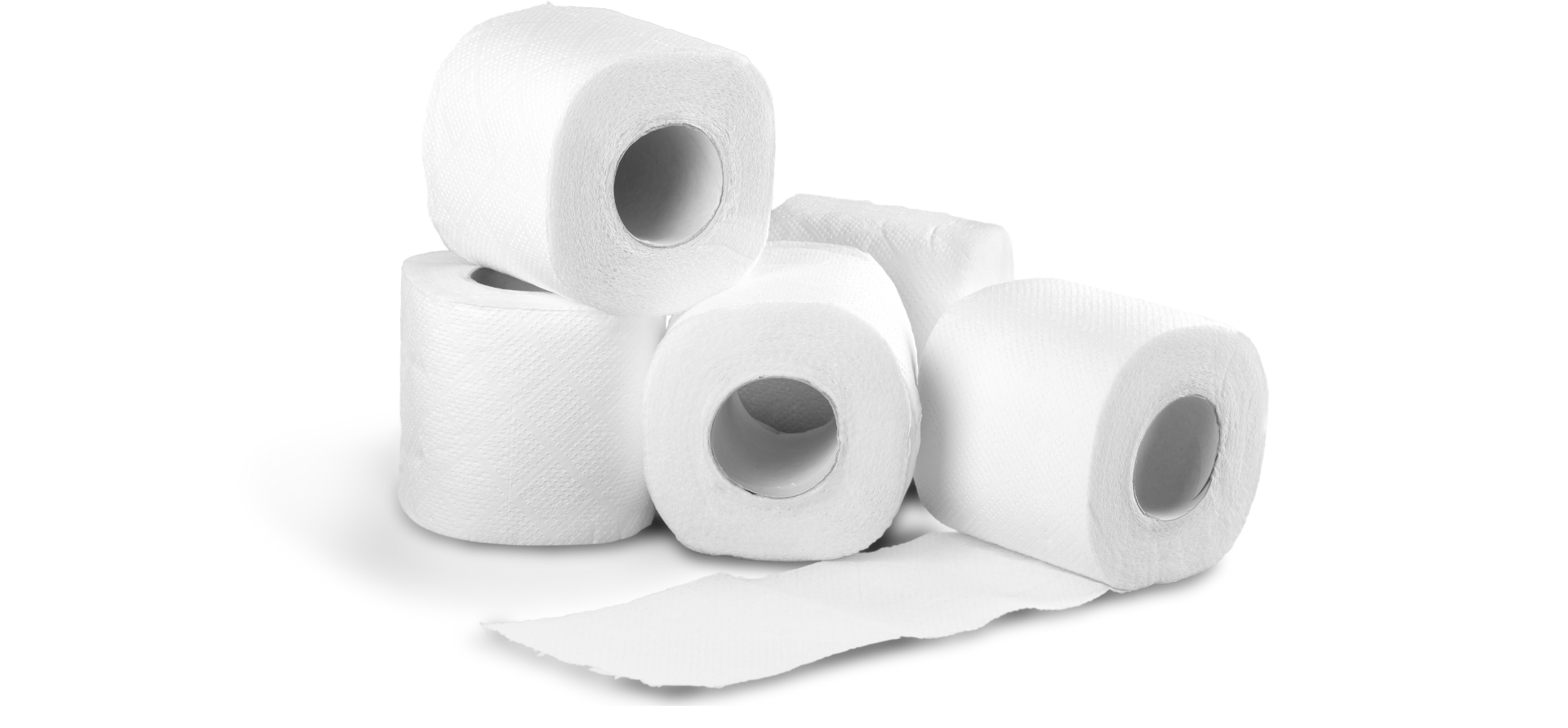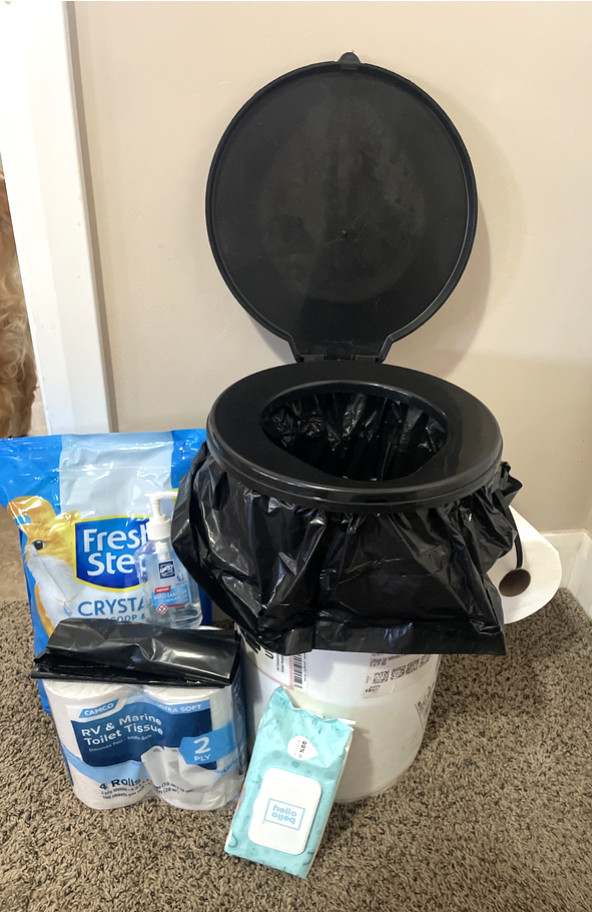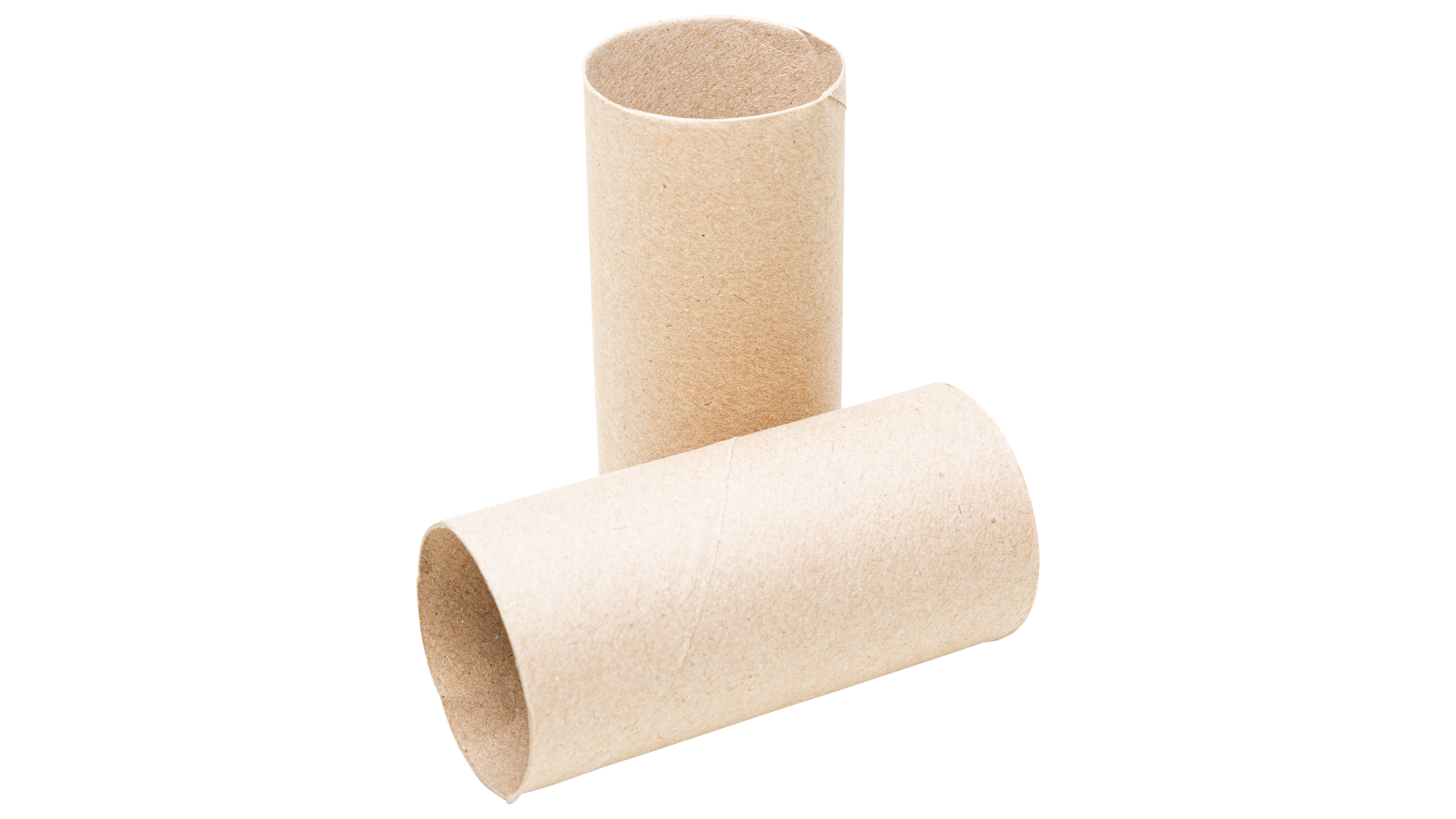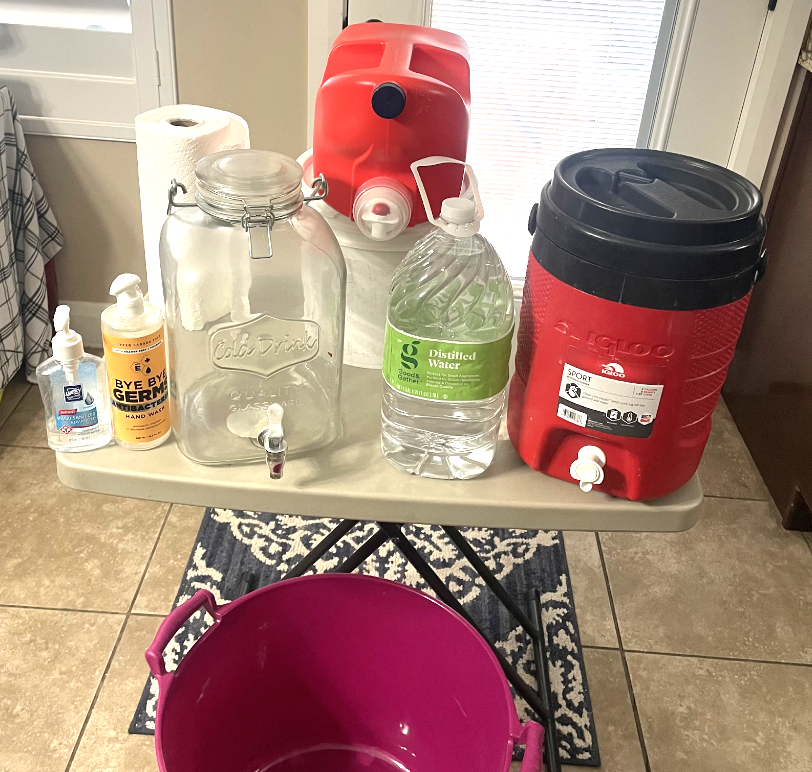Crafting Your DIY Emergency Toilet
Posted by Ola Griffin on May 16th 2024

In 2020, there was a toilet paper shortage frenzy! That was just four years ago. Did you have enough toilet paper stocked up, or did you end up rushing to the store along with everyone else to hunt for and buy this precious item? I remember watching the craziness and shaking my head, I was able to share my surplus of “the precious TP” with my adult kids and mom. I bet a lot more people now keep a few extra toilet paper rolls or packages in their home now. Like anything else we learn from mistakes, whether they are from ours or others.
Do you extend your preparedness beyond just stocking up on toilet paper, beans, and rice? In case of any emergency, what are your plans? Do you have extra water for cleaning and drinking if your water supply is disrupted? How will you manage restroom needs? Often, we overlook the challenges that can arise from a lack of electricity or running water due to our modern conveniences. In this blog, we'll explore various ways to prepare for toilet-related issues during emergencies and how to ensure your family stays safe from diseases from improperly disposed human waste.
Gray Water Flushing
If your water is not working but your sewer or septic is still operating, then having gray water or other water which can be used to manually fill and flush the toilet is wise. For years I have kept 2 liter bottles of water in my bathroom cabinets for this type of scenario.
In the event of an emergency, it’s advisable to only flush when needed, mainly for solid waste. Use only just enough water to flush and clear the toilet.
Always keep hand sanitizer in bathrooms to safely clean your hands when no running water is available.
Emergency Toilet
This is a quick and easy way to make a toilet that your family can use. If you have a large family you may want to make several of these and keep one in each bathroom. Now, there are a few ways to do this method, I will go over them once we cover the toilet and how to make it.

List of Items:
- 5-gallon bucket - You can use any 5-gallon bucket.
- Snap-on toilet seat lid - I purchased this at a prepper store, but you can find them on Amazon as well. Wal-Mart might also carry them in their outdoor / camping section.
- Toilet paper - I prefer using RV toilet paper since it breaks down really quickly, however, regular toilet paper if that’s what you prefer. I would suggest not putting used toilet paper in the bucket, but putting it in a separate lined trash can.
- Bags - You will need to get bags for the bucket and higher quality ones are suggested. Red biohazard marked bags are a good idea, but you can also use heavy-duty black trash bag, as I did in my photo. In a pinch, you could even use a 5-Gallon Mylar bag. If all you only have are white standard-style kitchen trash bags, I suggest doubling them up.
- Absorbing material - You can find liquid absorbent solidifier powder online or in the camping sections of stores. This powder helps to solidify liquid waste and also helps to deodorize, making it easier to dispose of. You can also use cat litter. I purchased crystal-style cat litter but you can get the clay style. Other types of absorbent material would be pine shavings or the pine pellets for animals.
- Zip Ties (18”) - Use to hold your roll of toilet paper and attach it to the handle of the bucket.
- Sanitizing wipes / hand sanitizer - Have plenty of this to make sure you can clean your hands after you use the restroom or replacing the waste bag.
Storing all necessary items in a designated bin or near the toilets is highly recommended for convenience. This eliminates the need to search for essential items when an emergency does arrive. Consider having a second bucket solely for storing absorbent material, ensuring containment and accessibility. A scoop or large cup can aid in transferring the absorbent material to fill the toilet.
Additional items to include in the emergency toilet bucket are:
- High-quality work gloves
- Sturdy work shoes (also add socks to the emergency bucket)
- Emergency blanket
- Poncho or rain jacket
- Baby wipes
- Disposable gloves
- Mason jar light kit
So with very little money you can easily make a few of these toilets. Now let's talk about how to use the toilet.
Use and Disposal
To use, simply place a bag inside the bucket, secure the lid tightly over the bag, and add a small amount of cat litter or other absorbent material into the bag.
For toddlers and smaller children, a toddler toilet seat should fit onto the emergency toilet. This will allow them to feel more comfortable and less scared to use the toilet.
For optimal use, older children, teenagers, and adults should aim to only defecate in the bucket while utilizing a separate method for urine. This separation ensures better usage of the toilet. In situations with privacy, urinating outdoors may also be an alternative. Female Urinating Devices (also known as a pee funnel) are available that allow females the ability to urinate while standing. An alternative is using a specimen collector pan and then disposing the liquid waste outdoors.
After use, add more absorbent and deodorizer material as needed. To reduce odors, you can add cat litter box freshness boost powder, carpet odor eliminating power, or even plain baking powder. Change bags when they are about 50% full or when you see the need to.
Check your local ordinance in regards to proper disposal protocols for human waste. Typically, burying waste in a hole several feet deep is recommended to prevent animal interference and contamination of water sources. However, precautions must be taken to avoid burying waste near gardens, running water, or buried utilities, as waterborne pathogens from fecal matter pose significant health risks.
Consider referencing resources such as Survivopedia - Waste Disposal When Living Off The Grid for comprehensive guidance on off-grid waste disposal.

What happens if you do not have toilet paper? During my childhood, I encountered situations like these multiple times. We resorted to using phone books/yellow pages and newspapers, disposing of them in the trash afterward. While not a pleasant memory, it was manageable. Another option is to use cloths or repurpose old t-shirts by cutting them into bathroom-appropriate pieces. Store these in a 1 or 2-gallon bucket along with a separate bucket containing water and bleach (ensure the bleach water is covered).
While not practical during situations where no running water is available, consider installing a bidet attachment to your household toilet. While already common in Asia and parts of Europe, the bidet business in the United States blew up during the pandemic and the accompanying toilet paper shortage. Many Americans are now realizing the benefits of having a bidet, in terms of cleanliness and in cost savings. You can find bidet attachments online for less than $35 that easily hook up to your existing toilet water supply line, no plumbing experience required. A great alternative to depending solely on toilet paper.
Emergency Hand Washing Station
Creating a DIY Emergency Hand Washing Station is important for maintaining hygiene, especially in situations where standard resources may be limited. Here’s a straightforward guide using household items for a portable handwashing setup that’s useful for various scenarios like camping, beach trips, or picnics.

Materials Needed:
- Empty Laundry Liquid Detergent Bottle - Choose an empty bottle with a knob/push dispenser for easy dispensing.
- Table and Towels - Set up a stable surface for the station and keep a towel handy for drying.
- Soap and Sanitizer - Essential for effective hand hygiene.
- Bucket (if needed for water collection)
Instructions:
- Prepare the Bottle - Clean and empty a liquid laundry detergent bottle, ensuring it’s rinsed thoroughly.
- Fill with Water - Fill the bottle with clean water, leaving enough space for the soap dispenser mechanism to function.
- Add Soap and Sanitizer - Place soap and hand sanitizer near the bottle for easy access.
- Set Up the Station - Position the bottle on the table along with the towel, soap, and sanitizer.
Check out the following video to see different ways to make a hand washing station:
By following these steps, you can construct a functional 5-gallon Toilet Setup using everyday items. Combine this with other emergency preparations, like the Emergency Hand Washing Station, to be better equipped for unforeseen situations. Taking proactive steps now ensures readiness and promotes safety during challenging times.
Happy prepping,
Ola D Griffin
Long-term Food Storage Expert
Customer Service, Safeguard Brands, Inc. dba PackFreshUSA
YouTuber Pandemic Prepsters - YouTube
Instagram - Ola Dee Griffin (@Preparedness101) • Instagram Photos And Videos
Tiktok - Oladeegriffin (@Oladeegriffin) | TikTok
|
Phone:(844) 857-8277
Mobile:(951) 902-4644 Email: customerservice@packfreshusa.comWebsite: PackFreshUSA.com Toll Free 5 Star Service Line: (844)8 5 STARS (844) 857-8277 |
PackFreshUSA is featured in this Meat + Poultry Magazine article on using oxygen absorbers with jerky.
Check it out!

